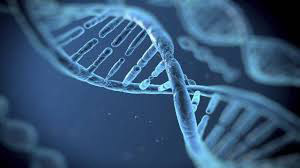NON-INVASIVE PRENATAL TEST
NON-INVASIVE PRENATAL TEST
What are we doing up to now?
The most common chromosomal abnormality of fetuses is trisomy 21 of the Down Syndrome and the least common are trisomy 18 and trisomy 13 and are directly related to the age of the mother. Their diagnosis takes place by performing a combinatory prenatal test that includes the ultrasound scan test of the fetus (nuchal translucency) biochemical markers of the mother, so that, depending on the possibility that will occur, the pregnant women with increased risk are selected and subsequently undergo an invasive prenatal test method. With such a practice 93% of trisomies 21 and 95% of trisomies 18,13 are discovered with an error probability (false positive results) of 1.3%.
Which is the new method?
However, the recent discovery that segments of the fetus’ DNA of placental origins circulate freely in sufficient quantities (after 10 weeks of pregnancy) in the maternal blood, has offered the possibility to determine, through techniques of mass or selective determination of the DNA sequence (MPSS, CSS, SNP), if there are more or less than the normal copies of chromosomes. This method is called non-invasive prenatal test of cell-free DNA (cfDNA test or NIPT) and according to a recent study its reliability is 99.5 % regarding trisomy 21 and 96% and 91% for trisomies 18 and 13 respectively, with an error probability of 0.08% for trisomy 21 and 0.26% regarding the other trisomies. In twin pregnancies the reliability regarding trisomy 21 is 93.7% with an error probability of 0.23%.
When?
The cfDNA test is not, of course, a diagnostic test, but a prognostic one, so that the women with increased risk finally undergo an invasive test in order to confirm the diagnosis. From the techniques that are used, MPSS has the lowest failure rate and the required time in order to get its result is between 5-10 days.
Where?
There are many medical companies that offer the test, of which the laboratories are mainly located in the USA. In Europe the only laboratory, which has important European certifications that guarantee the reliability of the result, is based in Switzerland.
Ultrasound vs non-invasive prenatal test
By comparing the two methods, it is obvious that NIPT is superior in terms of reliability than the classic ultrasound scan test, however, its cost and the slight possibility that there is no final result (1-5%), do not allow for the time being its application to all women.
Which women should undergo a NIPT test
The best strategy that is recommended is to perform initially the classic ultrasound scan test in combination with biochemical markers, which gives us important additional information about the anatomy of the fetus and the determination of the possibility that pre-eclampsia and growth retardation occur. In the cases where the risk is high (0.5% of the cases), women must undergo invasive prenatal test, when the risk is medium (20% of the cases) the non-invasive prenatal test (NIPT) must be performed and when it is low (80% of the cases) the pregnant woman must be assured that the possibility is minimal.
-
Is there a decrease?
-
If the test is positive can I be sure?
As it has been mentioned before, the test is prognostic and thus there is a slight chance that the cells that come from the placenta and are detected by the test have some trisomy, while the cells of the fetus are normal. For this reason, after a positive test result, a confirmation through an invasive prenatal test (amniocentesis) is always required.
-
What happens in multiple pregnancies?
-
Is there a risk that there is no result?
The risk exists particularly in obese women. For this reason, either the test is repeated, or an invasive prenatal test is performed.
-
What are the news regarding non-invasive prenatal test (new)?
According to the latest assumption of ISUOG regarding the effects of non-invasive prenatal test (NIPT) in the policy of prenatal test on the population, this test must not be performed when:
- The possibility of existence of a chromosomal abnormality is greater than 1/10, because to this group belongs a large percentage of the abnormalities (30%), apart from these that can be discovered by performing the NIPT (21,13,18)
- An ultrasound scan abnormality has been discovered or there is an increased nuchal translucency
- The risk is low, due to the age of the mother, and therefore – given the fact that there is a high cost and non sufficient data – it is better to perform a nuchal translucency and biochemical markers test
- A test has already been performed which has given no clear result; in this case the aGHH is preferred with amniocentesis in order to avoid a mosaic
Salomon LJ, Alfirevic Z, Audibert F, Kagan KO, Paladini D, Yeo G, Raine-Fenning N, on behalf of the ISUOG Clinical Standards Committee. ISUOG consensus statement on the impact of non-invasive prenatal testing (NIPT) on prenatal ultrasound practice.Ultrasound Obstet Gynecol 2017; 49: 815-816










